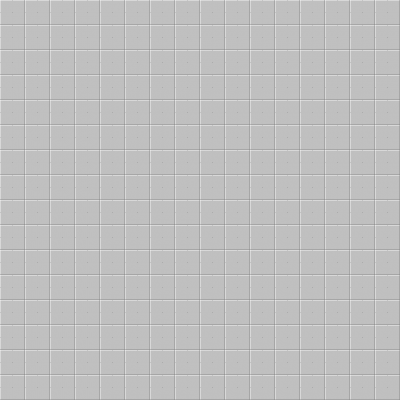Please create an account or Login! Have fun!
Grid: Difference between revisions
imported>Octavarium64 mNo edit summary |
(No difference)
|
Revision as of 22:16, 4 July 2009
The grid is used to refer to the 32x32 tile area where Chip's Challenge is played. The grid's squares are marked as X/Y coordinates, from [0, 0] to [31, 31] in level editors and in solution guides, commonly to refer to connections of traps or clone machines, or to indicate where a specific object is found at.
This is the grid blank:
The grid has two layers: the upper and lower grid. More on The grid in play.
The grid in level editors
To see the entire grid, the editor can be zoomed in and out. ChipEdit uses scale, and the other two main editors use zoom. This can also be used to generate maps in any square size. Be warned that ChipEdit's zoom quality is extremely muddy to awful, depending on the scale factor. To make maps in ChipEdit, zoom back to normal size before repasting the grid into Paint or PowerPoint. For maps in Tile World tiles, use CCEdit.
The grid in play
Chip will always be in a 9x9 grid, generally in the center, unless he is located on row or column 0, 1, 2, 3, 28, 29, 30, or 31, three or fewer spaces from the edge of the grid, in which case the missing nine spaces on that side will transfer to the other side. Therefore, Chip at [30, 5] will see from [23, 1] to [31, 9].
Objects on the lower grid will appear or be erased from the level when the square they are under is stepped on, depending on what runs into them; monsters will erase anything on the lower layer of a tile they cross, and Chip and blocks will reveal the tile. Whether the object takes effect on Chip depends on what it is; traps and exits, with an exception in the case of a connected but buried trap, which does not work on first passage, are the only two tiles which immediately have their effect.
In play, the outside boundaries of the grid act as thin walls in their direction; as a matter of custom, all CC1 levels except Thanks to... and other levels where the outer edge of the board is unreachable to begin with, the entire outer edge is covered with wall tiles.
The grid in this level guide
Many pages for monsters and other demonstrational diagrams are treated as small grids with identical numbering systems, and they may or may not be square.
